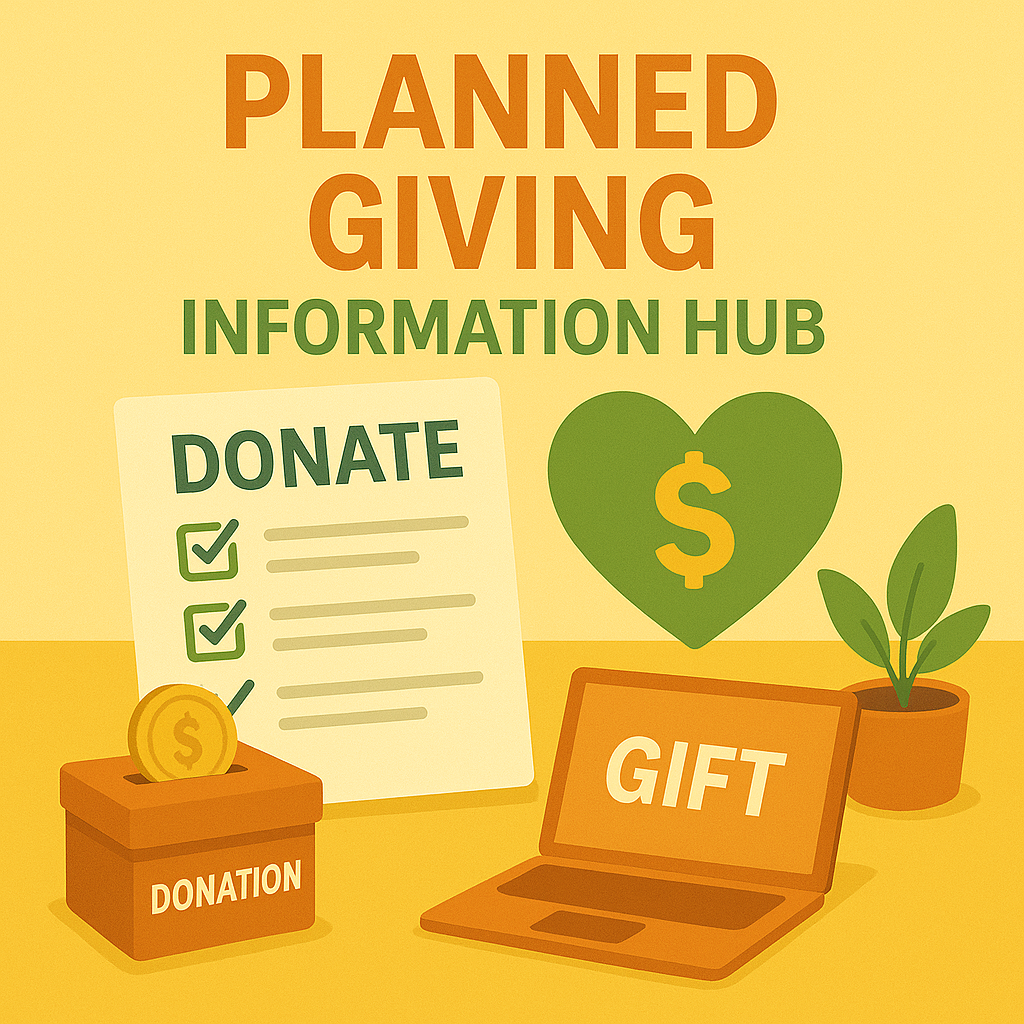How To Support the Causes You Care About
The Planned Giving Hub
Planned giving, also known as legacy giving or charitable bequests, allows individuals to leave a lasting impact by including charitable organizations in their estate plans.
Are you part of an organization looking to develop or improve your planned giving strategies? Visit our Planned Giving Roadmap for Organizations to access expert guidance and tailored resources to build a successful program.

Key Things To Know
Planned giving is a way to make a lasting impact by supporting the organizations and causes you care about—often in a way that aligns with your financial goals and estate plans.
- Planned gifts can take many forms: Common types include bequests in a will, beneficiary designations on retirement or life insurance accounts, charitable gift annuities, trusts, or gifts of appreciated assets like stock or real estate.
- You don’t have to be wealthy to make a meaningful gift: Planned giving is accessible to people at all income levels. Even modest gifts can make a long-term difference for nonprofit organizations.
- Bequests are the most common type of planned gift: You can leave a fixed amount, a percentage of your estate, or a specific asset to a nonprofit in your will or trust.
- Beneficiary designations are simple and powerful: Naming a charity as a beneficiary on an IRA, 401(k), or life insurance policy is an easy way to leave a legacy—often without changing your will.
- Planned gifts may offer tax advantages: Some giving strategies can reduce income, capital gains, or estate taxes, depending on your financial situation and the type of gift.
- Charitable trusts can provide income during your lifetime: Options like charitable remainder trusts or charitable lead trusts can offer income to you or your heirs while eventually benefiting a nonprofit.
- You should coordinate planned gifts with your overall estate plan: Work with your financial advisor or estate attorney to make sure your giving strategy aligns with your broader goals for family, taxes, and asset distribution.
- You can designate how your gift is used: Many nonprofits allow you to restrict your gift to a specific program or initiative, or you can leave it unrestricted to support general operations.
- Letting the organization know about your gift is helpful: While not required, notifying the nonprofit allows them to thank you, document your intentions, and invite you to legacy recognition groups.
- Planned giving is about values as much as assets: It’s a way to tell your story, pass on your beliefs, and invest in the future of the communities and causes that matter to you.
Resources
You shouldn't have to navigate planned giving on your own. Fortunately, we have the resources and tools to guide you every step of the way.
Planned Giving Templates
Planned Giving Related Content
Frequently Asked Questions
Disclaimer: The information provided on this website and by Buried in Work is for general informational purposes only and should not be considered legal advice. Please consult with a qualified attorney or subject matter expert for advice specific to your situation.


